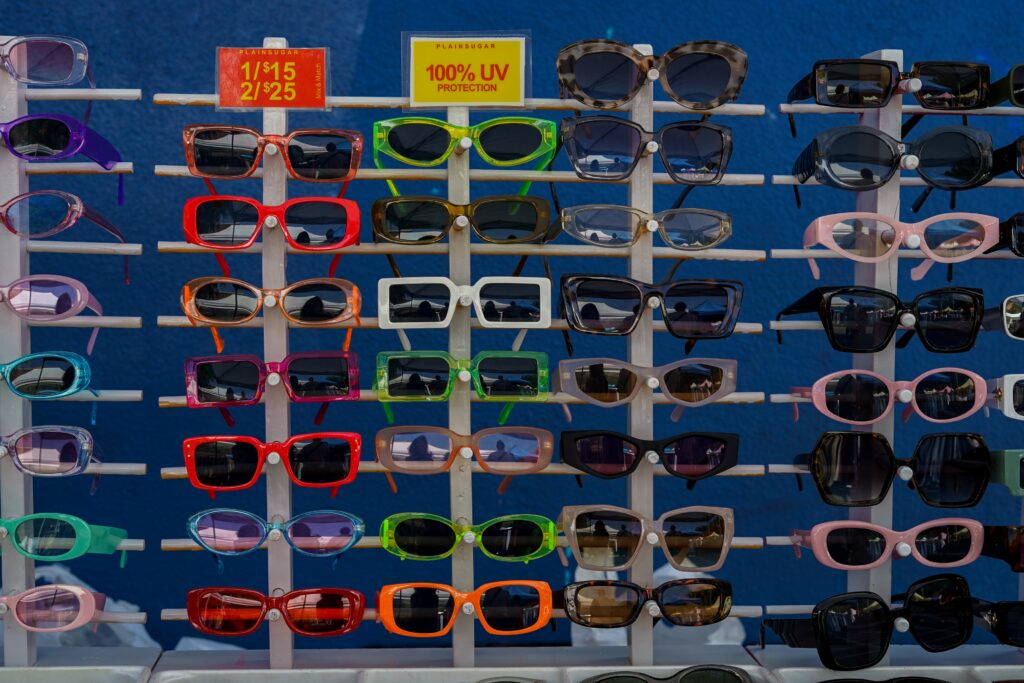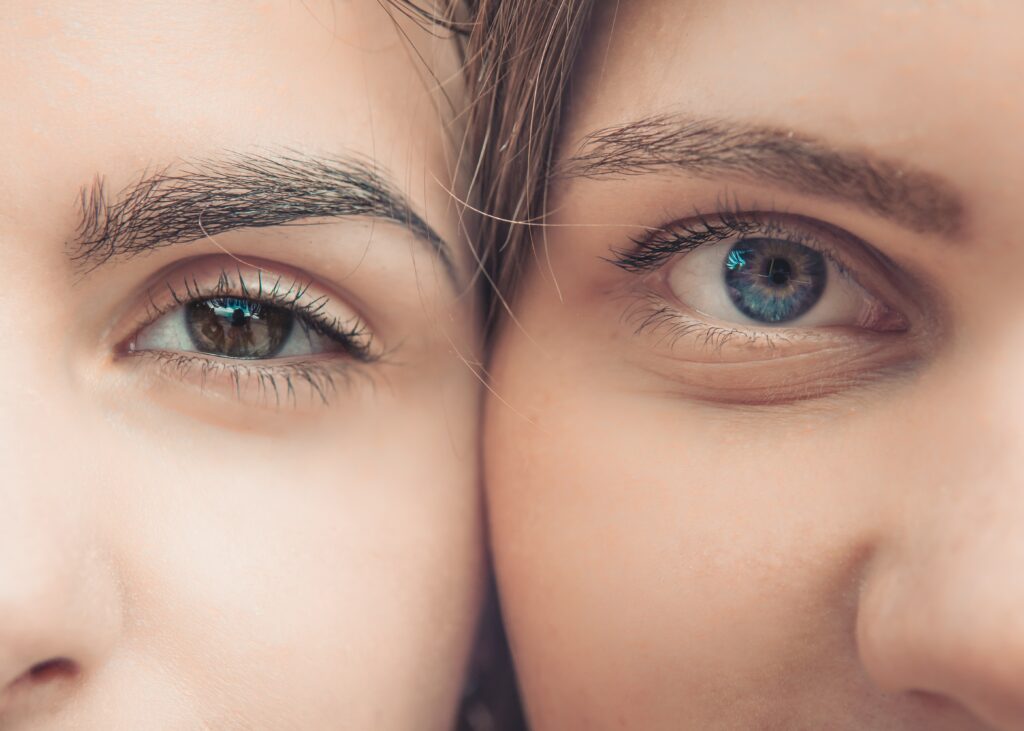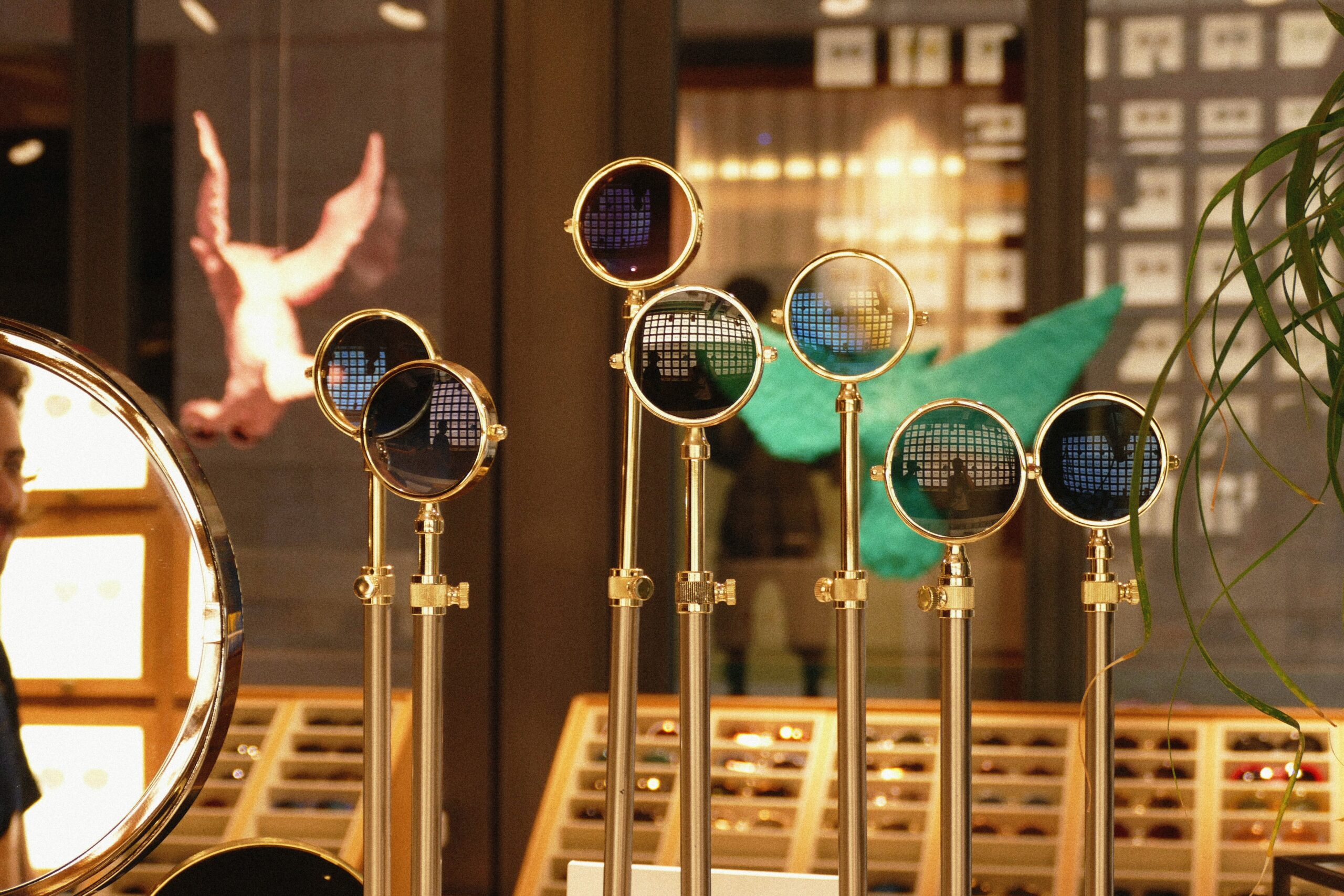How to choose the right coloured lens for you
Glasses have long been an essential tool for correcting vision in our daily lives. However, with the evolution of time, eyewear has transcended its functional role. Nowadays, it’s not just about addressing vision needs; glasses have seamlessly integrated into the realm of fashion. With distinctive designs and hues, they become a canvas for showcasing individuality and style. Amid this diverse spectrum of choices, coloured lenses emerge as a captivating option. They not only cater to visual requirements but also add a vibrant touch to our appearance. In this article, we will delve into the art of selecting the right coloured lenses, allowing you to exude unique charm and personality while donning your glasses.

Coloured lenses, as an eye-catching eyewear choice, have not only made a prominent mark in the fashion world but also bear a rich history and technological innovation. Their origins can be traced back to ancient Egypt and Roman times, where individuals began using tinted materials to craft eyewear for certain vision correction purposes. However, with the advancement of modern technology, coloured lenses have gradually transformed from mere functional products into a diverse selection that combines fashion and utility.
The development of coloured lenses is closely intertwined with the evolution of fashion expression. In the past, glasses might have been perceived purely as tools for vision correction. Yet, as society progressed and aesthetic perceptions evolved, eyewear became an important element for showcasing personality and style. The introduction of coloured lenses expanded the spectrum of choices, allowing wearers to select hues based on personal preferences and occasions, thereby standing out on the fashion stage.
In addition to their fashion appeal, coloured lenses offer several key functionalities. Firstly, they effectively shield against harmful ultraviolet (UV) radiation, reducing potential eye damage. UV rays are among the leading factors contributing to eye issues such as cataracts and ocular inflammation. The specialized coatings on coloured lenses filter out harmful UV rays, safeguarding ocular health. Secondly, coloured lenses provide effective glare protection, minimizing discomfort and fatigue under intense light conditions. This is particularly crucial for outdoor activities and driving, enhancing visual comfort and safety.
Coloured lenses serve the dual purpose of vision correction and fashion enhancement, offering a diverse range of eyewear options. Their journey from antiquity to modernity, from functionality to fashion, mirrors humanity’s ongoing pursuit of both vision protection and individual expression. When selecting coloured lenses, we not only cater to our visual needs but also carve out our unique style within the realm of fashion.

The color of lenses is more than just decoration; it’s a way to accentuate your personal style. Choosing the right lens color can enhance your overall appearance and complement your clothing style, personality, and occasions.
When selecting lens colors, your clothing style should be a primary consideration. If you prefer a minimalist and sophisticated dressing style, neutral lens colors like black, gray, or brown might suit you better. These colors can pair well with different clothing styles, exuding a professional and confident vibe. On the other hand, if you’re into edgy and bold fashion statements, vibrant lens colors like red, blue, or green could be more fitting. These lively hues can add a striking element to your overall look, catching the eye.
Moreover, your personality also plays a significant role in choosing lens colors. Different lens colors convey distinct emotions and atmospheres. For instance, warm-toned lenses such as brown or orange create a warm and friendly ambiance, suited for individuals with strong affability. On the other hand, cool-toned lenses like blue or green exude a sense of mystery and calmness, making them ideal for those who seek depth and introspection.

When selecting the right colored lenses for yourself, apart from personal style, your skin tone and hair color are also crucial factors to consider. Different skin tones and hair colors interact differently with various lens shades, making it essential to understand how to harmonize them effectively.
Let’s begin with skin tone. Human skin tones generally fall into two categories: cool undertones and warm undertones. If your skin has cool undertones, often leaning towards pink or bluish shades, opting for cool-toned colored lenses might be more suitable. Colors like blue, green, and purple can complement your skin tone, creating a harmonious effect. On the other hand, if your skin has warm undertones, leaning towards golden or olive hues, choosing warm-toned colored lenses might be a better match. Colors like orange, brown, and gold can coordinate better with your skin tone, exuding a warm sensation.
Additionally, considering your hair color is also crucial. Different hair colors interact with lens shades, impacting your overall appearance. For instance, individuals with blonde hair can consider warm-toned lenses like brown or orange, which can accentuate the luster of their hair and add vibrancy. On the other hand, those with darker hair might find cool-toned lenses like blue or green more contrasting, making their overall image more distinct.
For example, if you have fair skin and dark hair, you could contemplate selecting blue lenses. Blue lenses can create a sharp contrast with your hair color while preventing your skin from appearing overly pale. Alternatively, if you have a warm-toned complexion and light hair, brown or orange lenses might suit you better, enhancing the healthy radiance of your skin.
Understanding your skin tone and hair color and choosing lens colors that harmonize with them can create a more balanced and natural overall appearance. Experimenting with different lens colors based on your skin and hair can help you discover the most complementary combination, allowing colored lenses to become a unique addition to your personal style.

Colored lenses are not just about enhancing style; they serve various functions and effects that have diverse impacts on vision. Here’s an explanation of some common lens colors and their effects:
- Gray Lenses: Gray lenses are a popular choice because they maintain a balanced, natural color perception without significant distortion. They reduce overall brightness, creating comfortable outdoor visuals while maintaining good contrast. Gray lenses are versatile for different lighting conditions, especially for driving and outdoor activities.
- Yellow/Orange Lenses: Yellow or orange lenses enhance brightness and contrast, particularly in overcast or foggy conditions. They reduce the impact of blue light, aiding in clearer object outlines. These lenses are also suitable for outdoor sports like skiing and shooting, enhancing target clarity.
- Green Lenses: Green lenses absorb red and purple light effectively, reducing glare and providing a more natural visual experience outdoors. Green lenses are often considered more comfortable for the eyes, reducing glare interference while maintaining contrast.
- Brown/Amber Lenses: Brown or amber lenses increase contrast, making object outlines sharper. They also reduce glare and infuse a warm hue into the visuals. Brown lenses are highly popular for outdoor activities and driving.
- Blue/Purple Lenses: Blue or purple lenses are often chosen for fashion, yet they also reduce glare while maintaining decent contrast. These lenses might introduce some color distortion, so personal preference and visual needs need to be balanced when choosing.
To summarize, diverse lens colors bring distinct effects to your vision. Selecting the appropriate hue tailored to your requirements can enhance your visual encounter and align with your style aspirations. When making your lens color choice, taking into account diverse settings, activities, and how color influences brightness and contrast will guide you to discover the ideal tinted lenses for your unique preferences.

Summary
When considering coloured lenses, one must factor in personal attributes and needs. Encompassing vision correction and style trends, delving into their underlying narratives, elucidating functions such as UV protection and glare reduction. Skin and hair tones play a role in selection; the adaptability of cool and warm-toned lenses warrants exploration. Various lens colours impact visual effects, encompassing brightness, contrast, and more. Hence, a thorough understanding of distinct lens hues, coupled with tailored preferences, meets both visual and expressive demands. With the fusion of fashion and utility, opt for fitting coloured eyewear, radiating self-assured charm.




